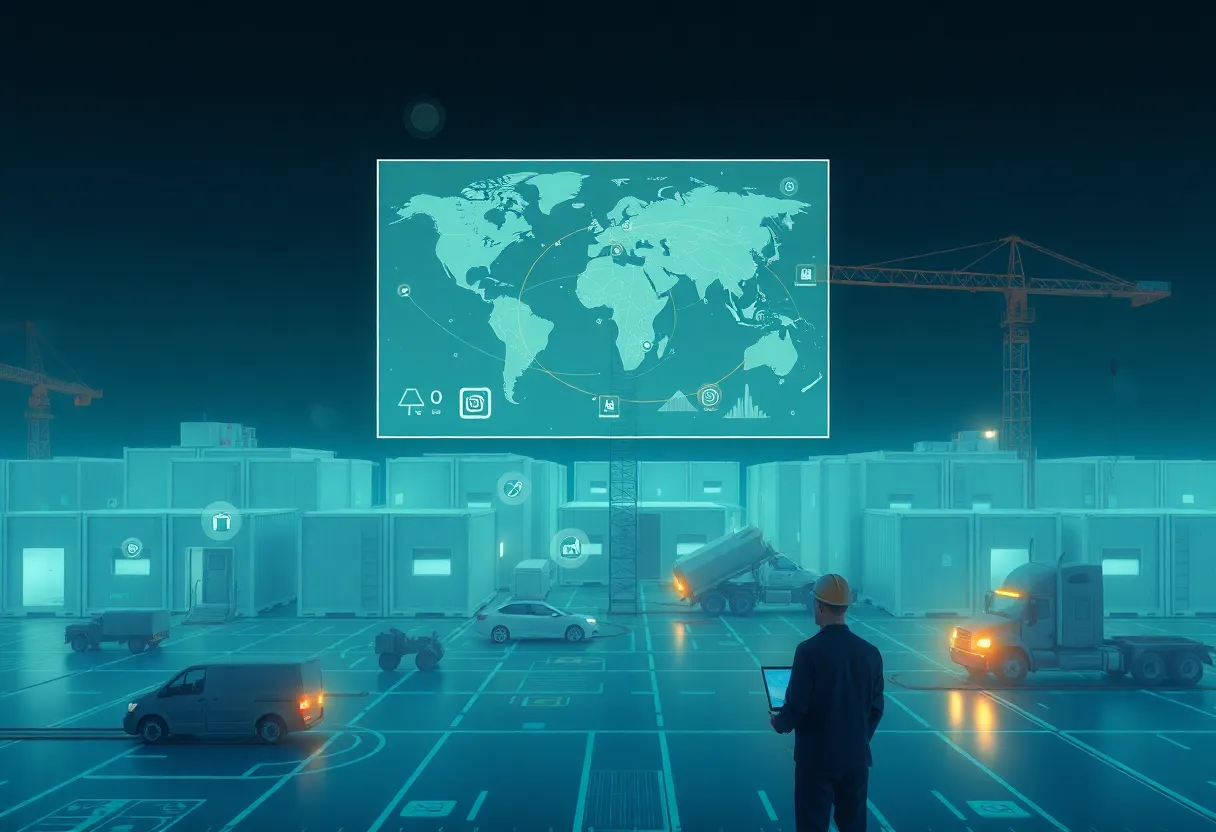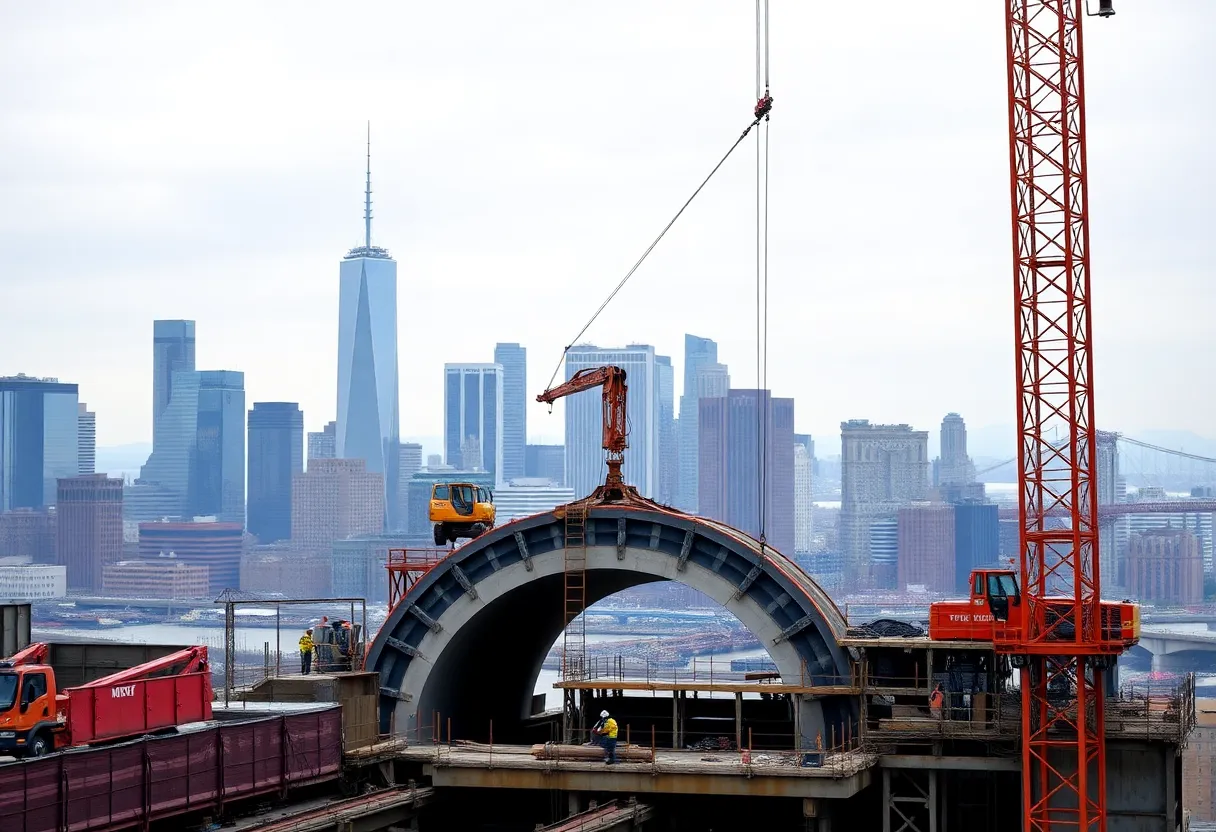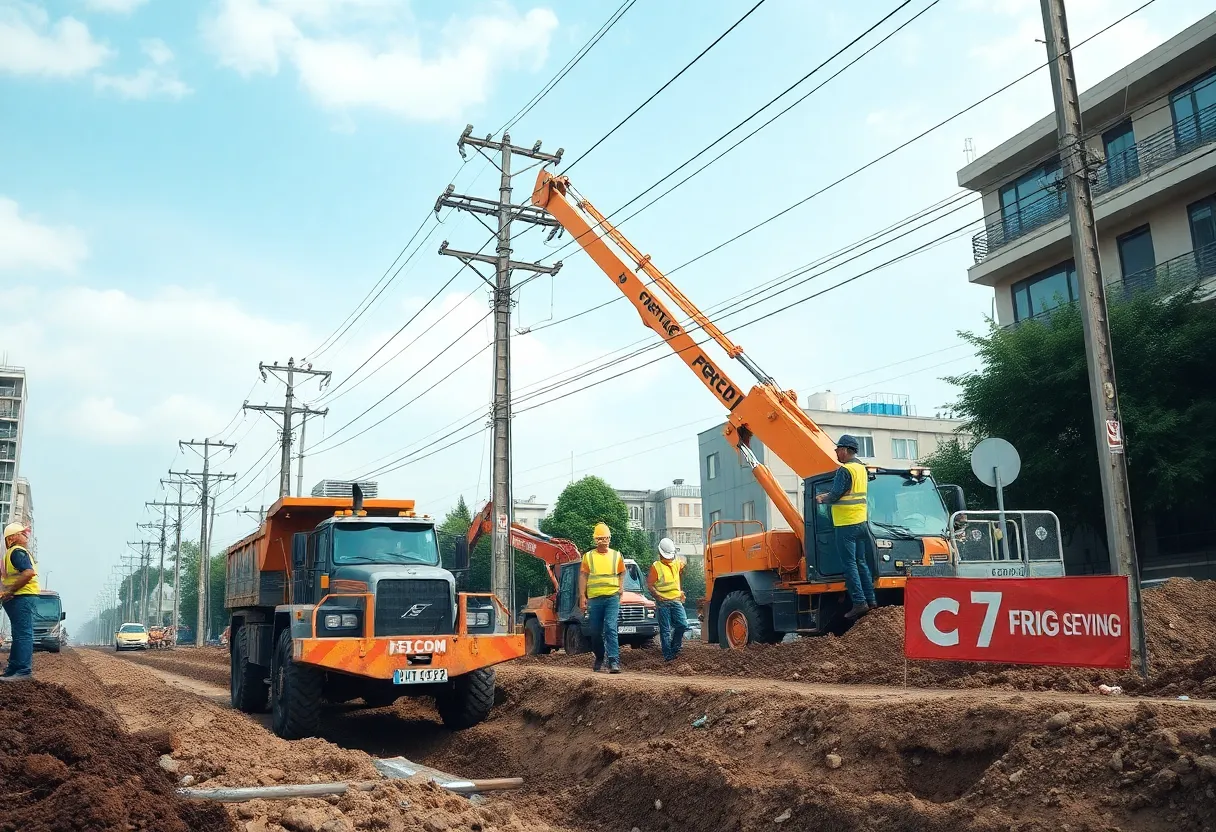Ansan, South Korea, August 19, 2025
News Summary
A research team at Hanyang University ERICA developed a digital twin–enabled facility management system (DT-FMS) to improve tracking, management and reuse of relocatable modular buildings. The platform integrates BIM, IoT sensors and GIS to create a real-time virtual model that supports monitoring, logistics and decision support across three layers: physical, digital and service. Tested on a relocatable modular school in South Korea, the framework improved module distribution, reuse and operational efficiency. Researchers say the approach can support circular construction by extending component life, though wider adoption needs data standards, sensor investment and manager training.
Hanyang University ERICA unveils a digital-twin framework to manage relocatable modular buildings and boost circularity
Researchers at Hanyang University ERICA have unveiled a new digital twin–enabled facility management system (DT-FMS) aimed at improving the lifecycle management and circular use of relocatable modular buildings (RMBs). The system links real-world modular assets to live virtual models and is intended to help the fast-growing modular building industry track, reuse and move modules between sites more efficiently.
What the new framework does
The framework is built to manage RMBs from assembly through transport, reuse and final decommissioning. It combines BIM, IoT sensors and GIS mapping to provide three core functions: 3D modelling, sensor-based monitoring and location-driven logistics planning. The platform is organized into three layers — physical, digital and service — so teams can follow components, people and data across a building’s life.
Key design and features
- Physical layer: Tracks modules, equipment and human actors on site and supports communication between real-world components and stakeholders.
- Digital layer: Integrates BIM models with live IoT data and GIS, enabling data analytics and 3D visualisation of asset condition and location.
- Service layer: Provides interfaces for monitoring, operational control and decision-making to support reuse, relocation and maintenance planning.
Research testing and results
The team tested the framework using a relocatable modular school system in South Korea. The case study showed improved module distribution, higher rates of reuse and better management efficiency. Those operational improvements were tied to further reductions in operational costs and energy efficiency. The testing suggested that better tracking and predictive analytics can reduce idle time for modules, streamline logistics and extend component life, which all help lower the environmental footprint of modular construction.
Why this matters
Modular construction already offers cost and environmental advantages over conventional builds because much of the work happens offsite and modules can be reused. But a persistent problem is tracking and managing modules as they move through multiple lifecycles and sites. The new DT-FMS aims to fill that gap by giving owners and managers a real-time, data-driven view of where modules are, how they are performing and when they are ready for reuse or maintenance.
Leadership and publication
The research was led by Associate Professor Yonghan Ahn and includes co-author Dr. Dennis Nguyen. The team published their framework in the journal Automation in Construction earlier this month. They describe the approach as a way to bring the advantages of digital twins into modular construction, where use of that technology is still limited compared with other industries. The researchers say the system can support circular economy practices by enabling reuse, reconfiguration and optimal relocation of modular units, which helps reduce waste and maximise value.
How the system could be used by industry
Adopters could deploy the DT-FMS to manage fleets of modular classrooms, temporary offices, medical units or housing blocks. By tying sensor data to BIM models and location services, operators gain tools for predictive maintenance, informed logistics planning and evidence-based decisions about reuse and refurbishment. The approach is likely to appeal to operators looking to cut operating costs, improve energy performance and meet sustainability goals.
Authorship and background
This report draws on a published research article and related case work. The contributing writer credited on the original article is Scarlett Evans, a freelance writer who focuses on emerging technologies and the minerals industry and who has prior experience as an assistant editor covering robotics and smart city technologies.
Frequently asked questions
What is the DT-FMS?
The DT-FMS is a digital twin–enabled facility management system that connects physical modular building assets with live virtual models to support lifecycle tracking, reuse and logistics.
Which technologies power the framework?
The framework integrates BIM for 3D modelling, IoT sensors for condition monitoring and GIS for location-aware logistics and mapping.
What types of buildings can benefit?
Any relocatable modular building can benefit, including modular schools, temporary healthcare units, site offices and modular housing that are assembled, dismantled and moved between sites.
What did the case study show?
The case study on a modular school system in South Korea showed improvements in module distribution, reuse and management efficiency, with linked reductions in operational costs and improved energy efficiency.
How does this support a circular economy?
By enabling clear records of module condition, location and history, the framework helps operators decide when to reuse, reconfigure or refurbish modules, reducing waste and preserving material value.
Key features summary
| Feature | Description |
|---|---|
| Purpose | Improve lifecycle management and support circular economy practices for relocatable modular buildings. |
| Core technologies | BIM, IoT sensors, GIS and digital twin models. |
| Platform structure | Organised into physical, digital and service layers for tracking, analysis and decision support. |
| Primary benefits | Better module distribution, higher reuse rates, management efficiency, lower operational costs and improved energy efficiency. |
| Test case | Relocatable modular school system in South Korea demonstrated practical gains in reuse and logistics. |
| Lead researchers | Associate Professor Yonghan Ahn and co-author Dr. Dennis Nguyen. |
| Publication | Findings published in the journal Automation in Construction. |
Contributing writer: Scarlett Evans, freelance writer specialising in emerging technologies and the mining and resources sector.
Deeper Dive: News & Info About This Topic
Additional Resources
- KoreaTechDesk: E8 – Leading Korea’s digital-twin revolution with deep-tech innovation
- Wikipedia: Digital twin
- GIM International: Seoul Metropolitan Government collaborates on hyper-realistic digital twin project
- Google Search: relocatable modular building
- DroneLife: A model of Korea — the ambitious project to make a digital twin of a country
- Google Scholar: digital twin modular construction
- GeoWeek: Techtree Innovation & Seoul government digital twin project for urban safety services
- Encyclopedia Britannica: modular construction
- PR Newswire: LG Innotek collaborates to drive its digital-twin technology
- Google News: digital twin modular building South Korea
Author: Construction NY News
The NEW YORK STAFF WRITER represents the experienced team at constructionnynews.com, your go-to source for actionable local news and information in New York and beyond. Specializing in "news you can use," we cover essential topics like product reviews for personal and business needs, local business directories, politics, real estate trends, neighborhood insights, and state news affecting the area—with deep expertise drawn from years of dedicated reporting and strong community input, including local press releases and business updates. We deliver top reporting on high-value events such as the New York Build Expo, infrastructure breakthroughs, and cutting-edge construction technology showcases. Our coverage extends to key organizations like the Associated General Contractors of New York State and the Building Trades Employers' Association, plus leading businesses in construction and real estate that power the local economy such as Turner Construction Company and CMiC Global. As part of the broader network, including constructioncanews.com, constructiontxnews.com, and constructionflnews.com, we provide comprehensive, credible insights into the dynamic construction landscape across multiple states.





